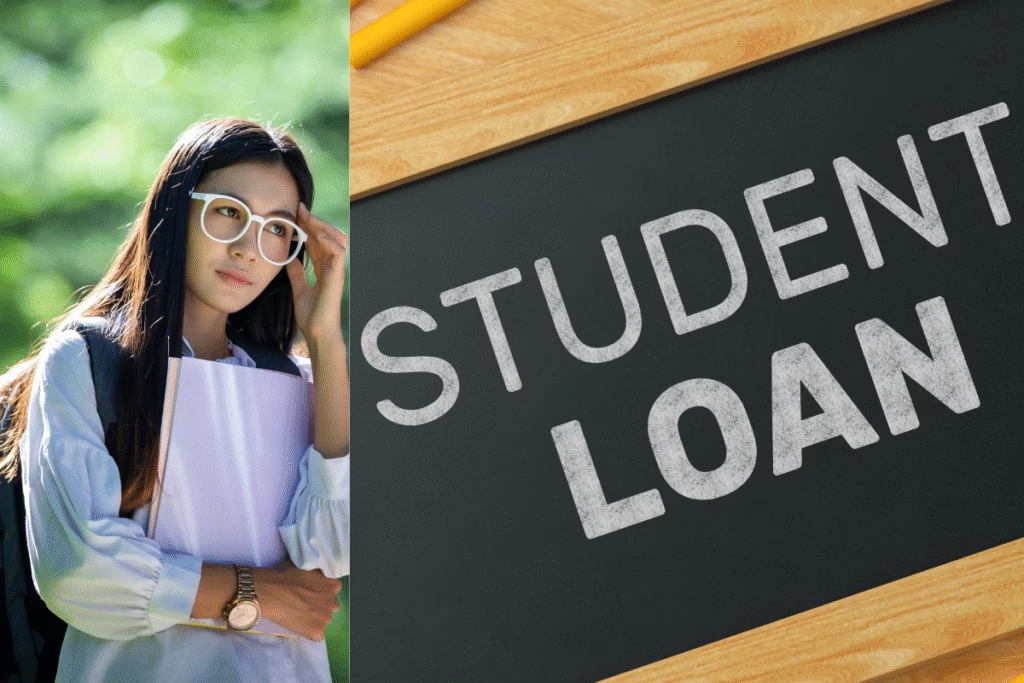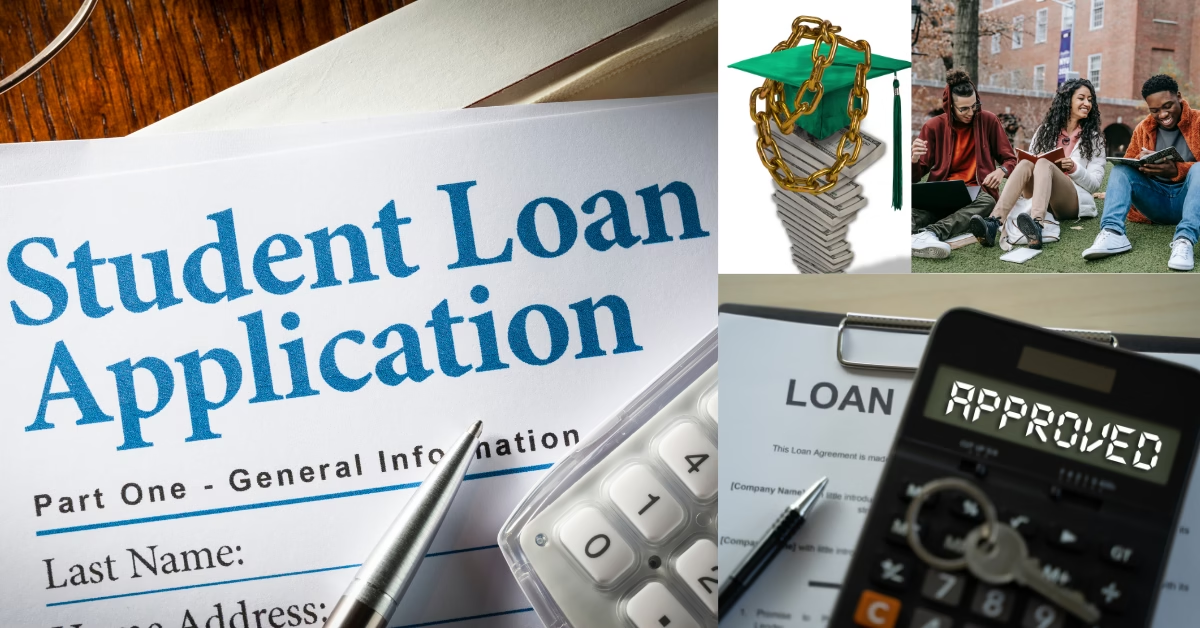Dear Reader , If you’re looking to fund your education in the US, you’ve probably heard about student loans. While federal loans (the ones from the government) are usually the first stop, sometimes they don’t cover everything. That’s where private student loans come in.
Think of them like a financial bridge to cover the gap between what federal aid offers and what you actually need for school. But unlike federal loans, private loans come from private lenders banks, credit unions, and even some schools. They’re a bit different, so let’s break it down in simple terms.

What Exactly Are Private Student Loans?
Imagine borrowing money from a bank for something big, like a car or a house. Private student loans are similar. They’re loans offered by private companies (not the government) specifically to help you pay for your college or university expenses. This could include tuition, room and board, books, and even living costs.
Here’s the key difference: Federal loans have rules and benefits set by the government, often designed to be pretty flexible. Private loans, on the other hand, are designed by the individual lenders, so their rules, interest rates, and repayment options can vary a lot.
How Do You Get One?
Getting a private student loans isn’t quite as straightforward as federal loans, which often don’t require a credit check for most students. Here’s a general idea of how it works:
- First, Max Out Federal Aid: This is super important! Always, always, always apply for federal student aid first by filling out the Free Application for Federal Student Aid (FAFSA). Federal loans usually offer better interest rates and more flexible repayment plans. Private loans should be your “plan B.”
- Check Your Credit (or Get a Co-signer): Private lenders are all about “creditworthiness.” This means they want to see if you have a history of borrowing money and paying it back on time.
- If you have good credit: Great! You might qualify on your own.
- If you’re a young student (like most of us!) and don’t have much credit history: You’ll very likely need a co-signer. This is usually a parent, guardian, or another trusted adult with good credit who agrees to be equally responsible for paying back the loan if you can’t. A co-signer can also help you get a better interest rate.
- Shop Around (Seriously!): Don’t just pick the first lender you see. Different banks and lenders offer different rates and terms. It’s like comparing prices for a big purchase. Look at:
- Interest Rates: This is the extra money you pay on top of what you borrowed. It can be fixed (stays the same) or variable (can change over time). A lower interest rate saves you money in the long run.
- Fees: Are there any application fees, origination fees (a fee for getting the loan), or late payment fees?
- Repayment Options: We’ll get into this more, but some lenders are more flexible than others.
- Gather Your Documents: Lenders will ask for things like:
- Your Social Security number
- Proof of income (if you have a job)
- School enrollment verification (like an acceptance letter)
- Cost of attendance information from your school
- If you have a co-signer, they’ll need similar documents.
- Apply : Most lenders have online applications. They’ll do a “credit check,” which might temporarily ding your credit score a tiny bit. If approved, read the loan agreement very carefully before signing!
How and When Do You Repay?
This is where private loans can be a bit less flexible than federal ones.
- When Repayment Starts:
- Many private Student loans offer an “in-school deferment,” meaning you don’t have to start making full payments until after you graduate, leave school, or drop below half-time enrollment. This deferment period is often around six months.
- However, some private loans might require you to make small, interest-only payments while you’re still in school. This can actually save you money in the long run because interest won’t build up as much.
- Be sure to check what your specific loan requires!
- Repayment Options:
- Standard Repayment: This is the most common. You make fixed monthly payments for a set period (often 5, 10, or 15 years) until the loan is paid off.
- Interest-Only Payments: As mentioned, some lenders let you pay only the interest while in school or for a short period after. This keeps your balance from growing, but you’ll still owe the full principal later.
- Deferred Payments: Similar to in-school deferment, some lenders might offer a temporary pause on payments if you’re experiencing financial hardship, but interest usually continues to pile up during this time.
- Forbearance: Another temporary break from payments due to hardship. Again, interest usually accrues.
- Refinancing: Once you’ve graduated and have a steady income, you might be able to “refinance” your private loans. This means taking out a new loan, often with a different lender, to pay off your old ones. The goal is usually to get a lower interest rate or different repayment terms.
Important Note: Unlike federal loans, private loans generally don’t offer income-driven repayment plans (where your payments are based on your income) or widespread loan forgiveness programs. This is a big reason why federal loans are usually preferred.
ALSO READ : What is Debt Management? Your Easy Guide to Student Loan Debt in the US: Repayment, Forgiveness & Smart Strategies Navigating Student Loan Debt: Top Strategies for Repayment in the USA Master Your Money: The 50/30/20 Budget Rule Explained for Beginners in the USA
Conditions to Keep in Mind:
- Credit Score is King: Your (or your co-signer’s) credit score is the biggest factor in getting approved and getting a good interest rate. A higher score means better terms.
- Variable vs. Fixed Interest Rates:
- Fixed: Your interest rate stays the same throughout the life of the loan. Predictable payments!
- Variable: Your interest rate can go up or down based on market conditions. This means your monthly payment could change, which can be risky if rates go up.
- No Federal Benefits: This is a huge one. Private loans don’t come with the same safety nets as federal loans, like:
- Income-driven repayment plans
- Public Service Loan Forgiveness (PSLF)
- Generous deferment and forbearance options
- Discharge options for certain situations (like total and permanent disability)
- Borrowing Limits: Private lenders usually let you borrow up to the “cost of attendance” at your school, minus any other financial aid you’ve received. But always borrow only what you truly need.
- School Certification: Your school will usually need to “certify” your loan amount to the private lender, confirming your enrollment and cost of attendance.
The Bottom Line
Private student loans can be a useful tool when federal aid isn’t enough. Just remember to treat them like any serious financial commitment. Do your homework, compare your options, understand the terms, and borrow responsibly. And always, always prioritize federal loans first!

